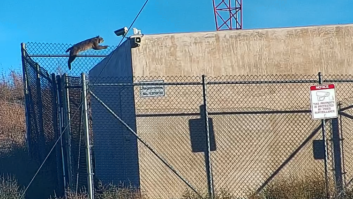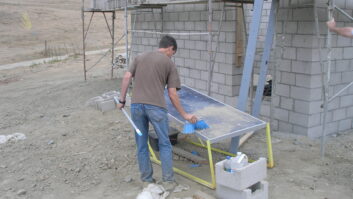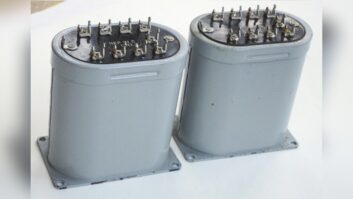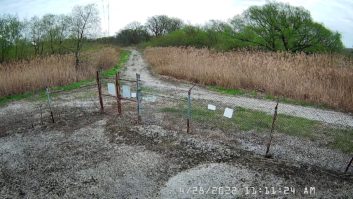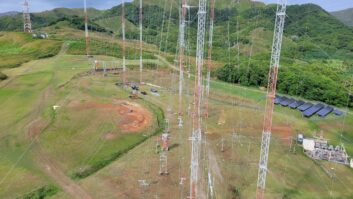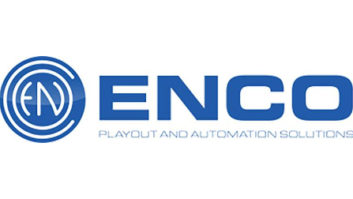
Jeff Welton is regional sales manager, Central U.S., for Nautel. This is one in a series of Q&As with industry professionals about their presentations at the upcoming NAB Show in Las Vegas.
Radio World: Your session is entitled “Safety and Security at the Transmitter Site,” (Wednesday, April 25, 9:30–10 a.m.). What is the state of safety and security at most transmitter sites?
Jeff Welton: It varies a lot from one site to another. I’ve been to sites that are poster children for security and safety, others that may highlight one over the other and still others where neither has been even given a passing thought. I tried to look at this paper from the viewpoint of providing suggestions that gets the topic forefront in everybody’s mind, so that they can make improvements to both facilities and their procedures, as the situation and the budget allow.
RW: What are the greatest or most common threats to the security at transmitter sites?
Welton: In this paper I discuss both physical and intellectual (IT) security. Physically speaking, the most common threat is usually location. Transmitter sites are typically located in remote areas and can be quite a distance from any type of assistance. Regarding information technology, customers leaving default user names and passwords in use is without a doubt the biggest challenge, especially when there is no other security provided.
RW: What are the greatest or most common threats to the safety of engineers at remote transmitter sites?
Welton: Without question it’s that engineers are working longer hours with fewer resources, often contracting after putting in a full-time day job, most commonly alone. There’s pressure to get the station back on-air or to get the job done and often that can involve shortcuts that can put the safety of the engineer, as well as the equipment, at risk. Working alone, tired, without adequate safety equipment or training, sometimes with limited knowledge of the equipment being worked on, they’re all invitations to trouble.
RW: We occasionally read about copper thieves, are they still a threat?
Welton: Absolutely. Probably more with AM sites, than with FM or TV, since there’s a lot more copper in the ground that can be fairly easily removable, but I’ve been to sites in the past year or so where tens of thousands of dollars’ worth of air conditioning equipment was destroyed to get about $100 in scrap copper.
RW: Are remote monitoring systems such as those produced by Burk Technology, Davicom and others (including Nautel’s own AUI) capable enough or doing enough to help with security at remote transmitter sites?
Welton: While I can’t speak to a lot for the others, I do know all of us can monitor remote closures, such as door switches or alarm systems. From the IT perspective, there’s certainly more all of us, both manufacturers and customers, could do, as it’s not uncommon to see broadcast equipment totally open to the world, with no firewalls in place, using the manufacturer’s default user name and password. There are improvements that could be useful, both in features for conventional remote controls (such as video inputs and IP logging for IP connected devices) and for embedded controls, such as our AUI or other manufacturers’ equipment. Perhaps room audio recording, so you can hear if something is going on before you go through the gate, especially if it’s open, for example.
RW: While there are physical threats there are also such less-manifest threats as hacking a site, yes?
Welton: During a recent scan for broadcast related devices, in the process of acquiring material for this presentation, I found two of our customers online, whose systems I could access with no prior knowledge of their existence. For one of them, I downloaded the manual from our website to get the default information, so that’s one piece of equipment that anybody with even rudimentary interest in causing trouble would be able to get to. Given the recent intrusions into codecs, both last fall and last month (and the RDS hacks last month and more recently), it’s astounding that I can still find over 4,500 visible codecs and RDS generators on the internet, with only a rudimentary search. Incidentally, both of our customers referenced above have been contacted and the default logins changed.
This is something that we ALL need to start paying much more attention to — somebody turning your transmitter off could be an inconvenience and result in lost revenue. Somebody accessing your audio codec or video FTP server could cause much bigger problems, with the attendant fines that could be involved. On our end, I’ve made a commitment to check periodically and notify any customers that I see unprotected, but this is something that needs to be addressed on the user side.
RW: Will you be joined by any guests?
Welton: For this presentation, no — I am limited to 30 minutes and will only be able to scratch the surface as it is. I would like to suggest that this is a critical subject and I would certainly like to see a panel or forum involving more people (perhaps at the fall Radio Show?). While I’m a self-professed loudmouth, I’m certainly not an expert in this area and I’d like to see more emphasis being put toward all three areas of safety and security: personal, equipment and IT.
RW: It’s a big show and attendees are strapped for time, why should they put your session on their must-see list?
Welton: As the average age of the broadcast engineer increases, with new engineers coming into the industry at a slower rate than those leaving, safety is going to be something that potentially becomes a much bigger risk factor, in terms of personal risk, damage to equipment and station liability. The same goes for IT security — while younger engineers tend to be more IT-aware, more often equipment is being connected by non-engineering folks, who may not even consider the risk aspect. This session gives a lot of information in a very short time on things that will help any attendee to leave the room with more awareness of their safety, as well as thoughts on how better to protect their client’s investment, both in hardware and information technology. On the management side, it will provide information on risks that many managers may not even be aware are out there, or may not have considered. Over 27 years with Nautel, I’ve wandered through hundreds of transmitter sites, I’ve been fortunate to work with a company where safety is given top priority and I’m going to try to distill as much as I’ve learned on the topic at hand into 30 minutes as I possibly can.
For more NAB Show-related news and features check out our NAB Show News page.






